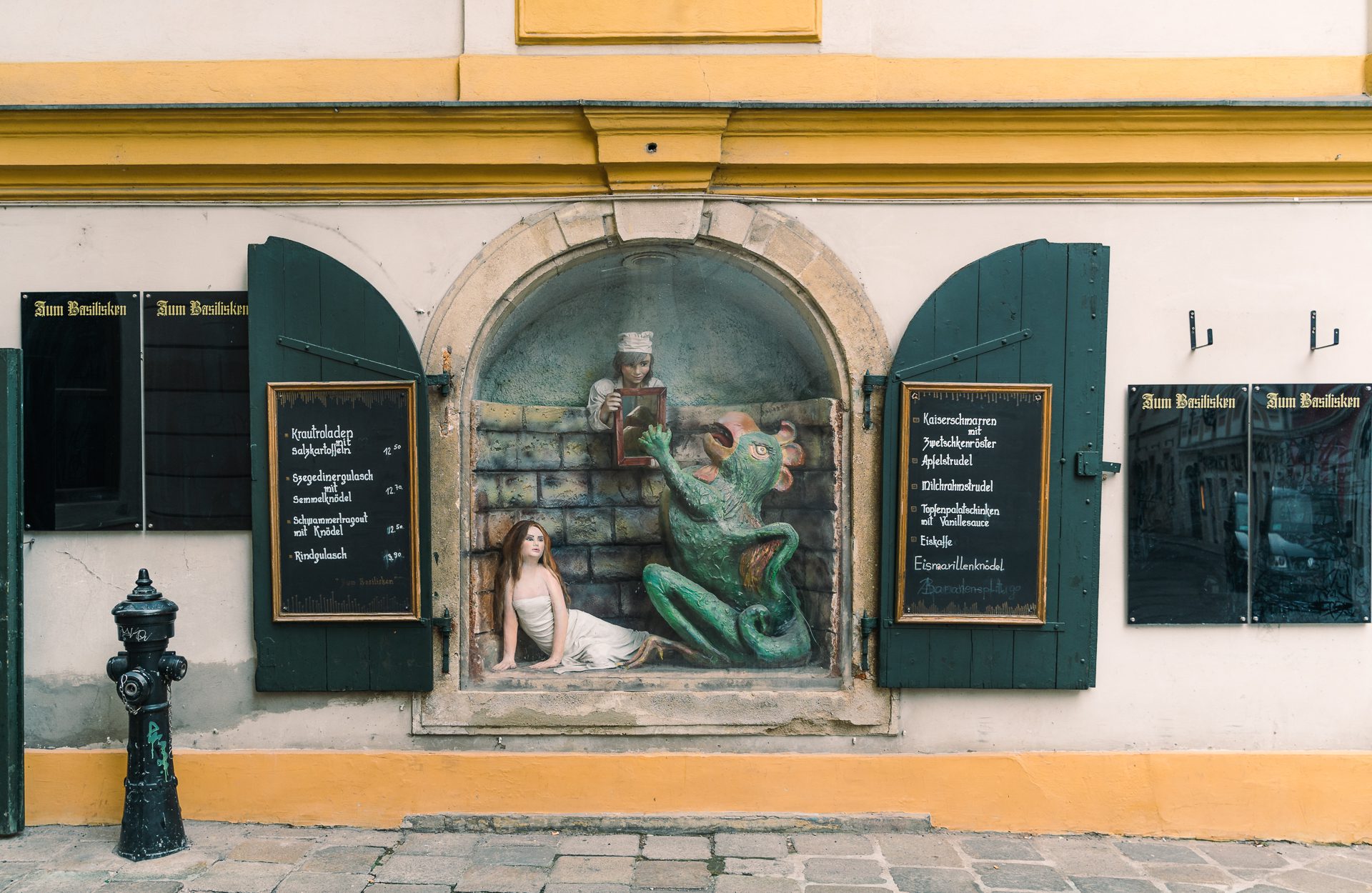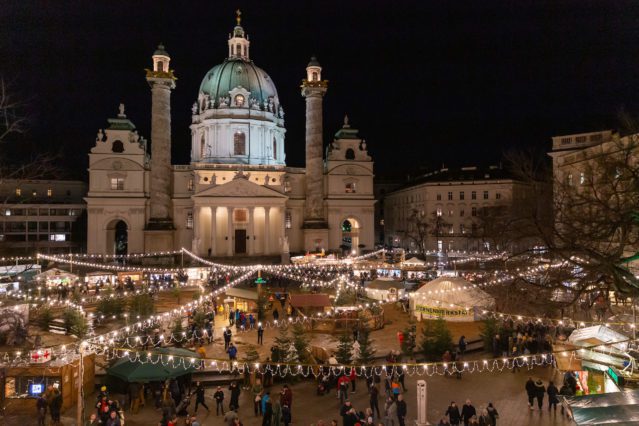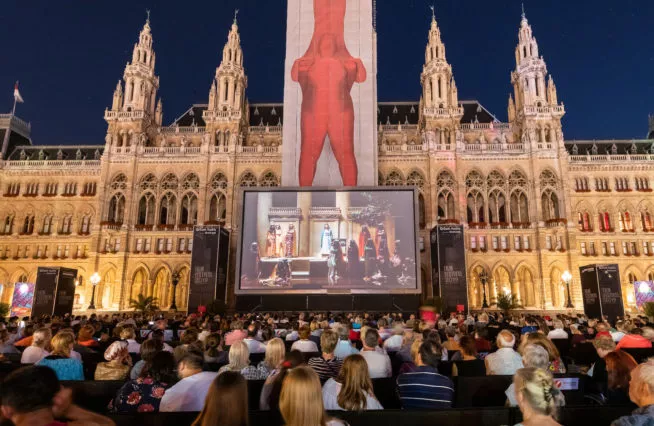Thousands of people walk past it every day, but only a few will notice the glass case mounted at the corner of Kärtnerstraße and the Graben. Inside the case is a tree trunk from the Middle Ages, held in place by an iron clasp and padlock. The tree is studded with hundreds of nails that were pounded into it for good luck over centuries. One legend says that a young locksmith sold his soul to the devil to become a great craftsman, and in return he would construct a lock that no key could open, to secure the last tree standing at the Stephansplatz. In reality, no key can open the lock…because it’s only decorative and contains no mechanism.
Vienna is full of stories you won’t find in any history books, but they live on in places buried underground, nearly forgotten, or hiding in plain sight. And while some might be closer to the truth than others, all belong to the rich history of this city we call home.
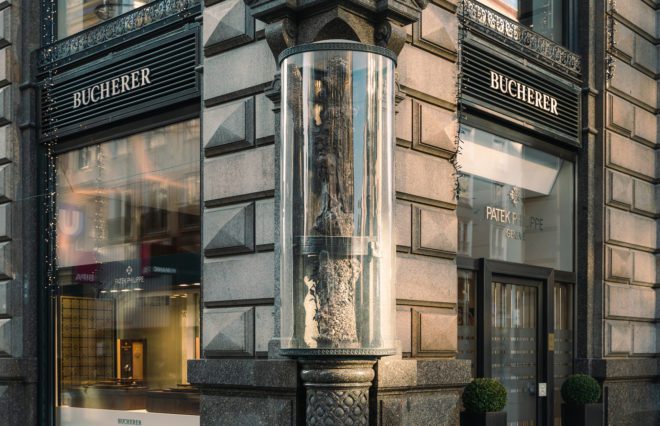
© Vienna Würstelstand | David Schneider
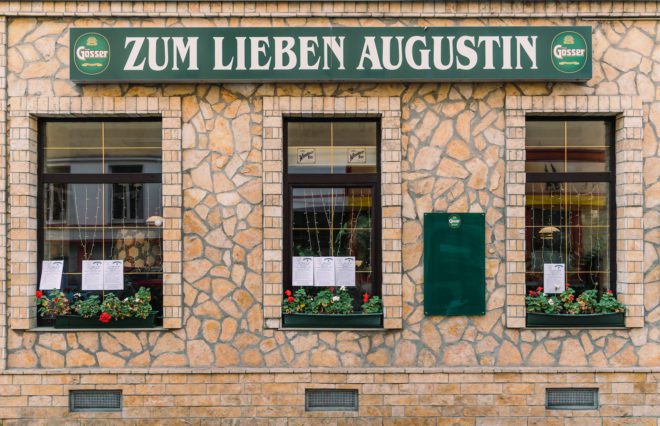
© Vienna Würstelstand | David Schneider
Lieber Augustin – Historical Spots in Vienna
Back when Vienna was haunted by the Great Plague, a cheerful/drunk street musician named Augustin managed to cheat death. He was stumbling home after a rough night out, still trying to play his bagpipes, when he slipped, hit the cobblestones, and decided to sleep it off right where he had fallen. In those dark days, plague victims were simply thrown out on the streets to be picked up and dumped outside the city, so the body collectors who found Augustin assumed he was dead. They scooped him up and dropped him in a pit with the corpses of his unfortunate fellow citizens but in the early morning hours, Augustin miraculously awoke. He scrambled out from among the tangled bodies and headed back to town, thinking he would surely show signs of plague any day now. But the day never came, and Augustin continued to play joyful songs on his bagpipes for a very long time.
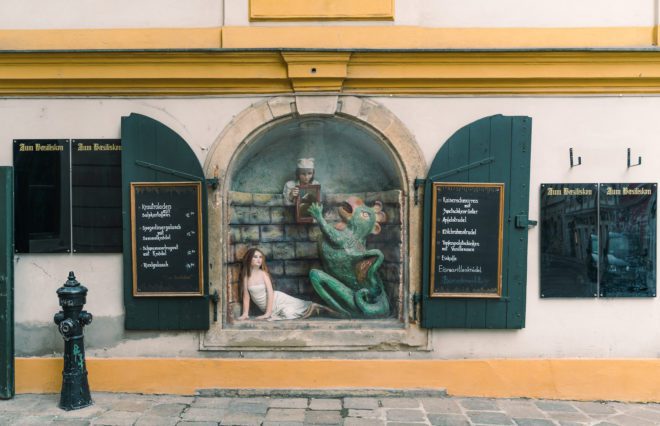
© Vienna Würstelstand | David Schneider
Basilisk – Historical Spots in Vienna
On the morning of June 12th,1212 cries of fear were heard on Schönlaterngasse. The baker’s daughter had gone to fetch fresh water but was struck by a nauseating smell coming from the bottom of the well. A brave man named Heinrich was lowered down to investigate but was pulled back up nearly dead, saying he saw a creature horrible beyond imagination. A wise man passing by explained that it was a Basilisk, grown from a chicken’s egg that had been hatched by a toad, and that the only way to kill the creature was for it to see its own reflection. Young Hans, who was hopelessly in love with the baker’s daughter, grabbed a mirror and volunteered to go down and deal with the Basilisk. Sure enough, the monster to one look at itself, and died. Hans and the baker’s daughter were married shortly after but poor Heinrich never recovered, a victim of the evil Basilisk.
There is some truth to this story because the fumes that emerged from below ground in those days were sometimes bad enough to make you sick…or worse.
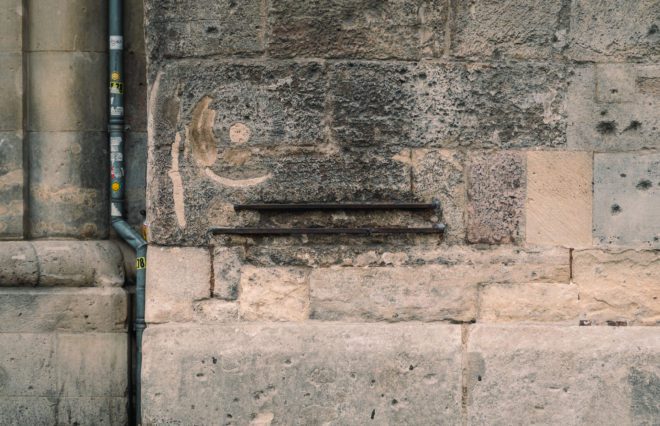
© Vienna Würstelstand | David Schneider
Stephansdom measuring units – Historical Spots in Vienna
Have you noticed the two lengths of iron embedded in the wall outside the cathedral’s main entrance? They were put there in 1450, to be used as standard measures so that citizens were able to check if the amount of fabric they bought was actually correct. Above them you can see is a round mark that Vienna guides like to tell that people was used to measure the size of bread, but this is just a myth. It’s simply leftover markings from the crank used to open a decorative Rococo gate, which no longer exists.
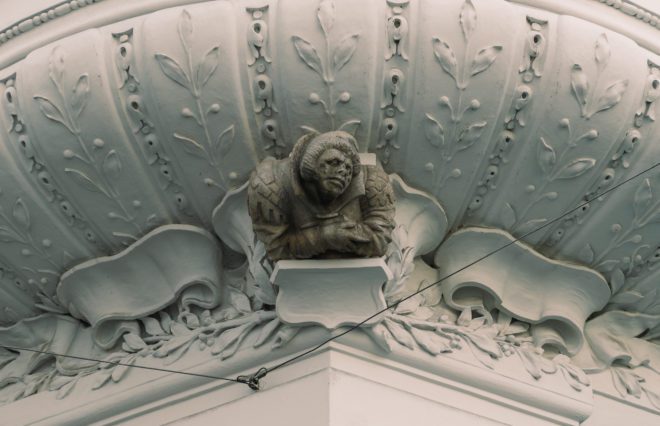
© Vienna Würstelstand | David Schneider
Lugeck Haus – Historical Spots in Vienna
If you look closely at the upper corners of the Lugeck house, you’ll notice two faces, one on the left, one on the right. As the story goes, the wealthy couple who lived there didn’t approve of their son’s marriage to an “unsuitable” woman. The son, angered by their disapproval, took his bride and moved far away. His parents, who regretted being so harsh and thoughtless, spent the rest of their days looking out the window hoping they’d see their son returning home, but he never did.
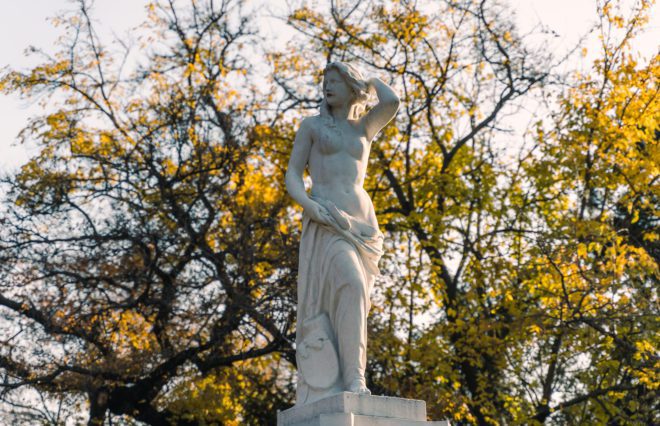
© Vienna Würstelstand | David Schneider
Donauweibchen – Historical Spots in Vienna
In legends the Donauweibchen was a kind-hearted mermaid who would bring treasures from the river to lucky fishermen, or give them warnings of floods and storms so they could get to safety in time. Today, you can still encounter a Donauweibchen at her fountain in the Stadtpark, and if you wish hard enough…well, you never know.
The Last Supper at Minoritenkirche – Historical Spots in Vienna
Da Vinci’s The Last Supper is one of the most famous paintings in the world, but did you know that we have the most accurate replica right here in Vienna? Commissioned by Napoleon over 200 years ago, this exquisite mosaic copy eventually made its way into Vienna’s Minoritenkirche. And while Leonardo’s original has been repainted so many times that hardly any of his work survives, this nearly 50 square metre reproduction of his masterpiece lives on in its full glory.
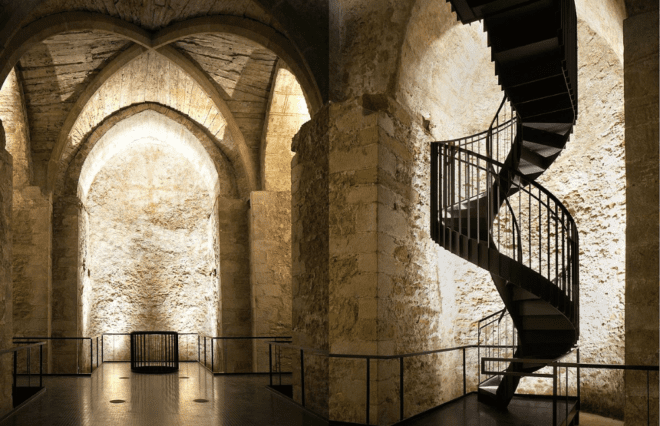
© bwmarchitects
Virgilkapelle – Historical Spots in Vienna
If you pass through the Stephansplatz underground station you’ll come across a mysterious, centuries-old chapel behind glass. Discovered in 1973 during the construction of the U-Bahn, the chapel dates to at least the 1300s and is mentioned nowhere in the records of the city. Certainly makes you wonder what else could be hidden in Vienna’s underground.
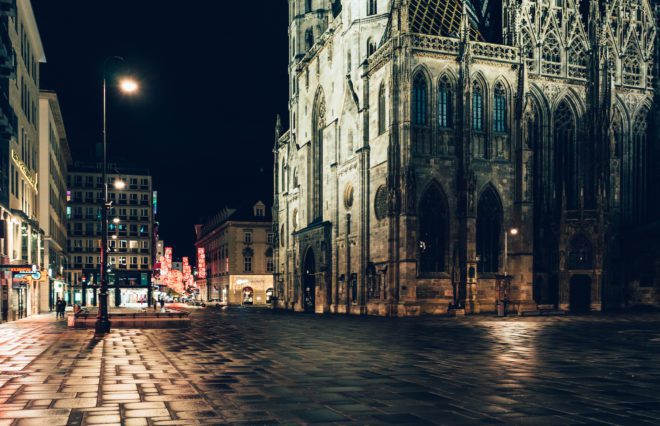
© Vienna Würstelstand | David Schneider
Graveyard at Stephansplatz – Historical Spots in Vienna
The thousands of people streaming past the Stephansdom every day are probably unaware of the grim fact that hey’re walking on a long-forgotten graveyard. From the Middle Ages up until 1783 the area that became the Stephansplatz was the final resting place of many of Vienna’s deadest citizens. Even though a few of them were dug up during the restoration, many still rest beneath the most lively location in the city of Vienna.
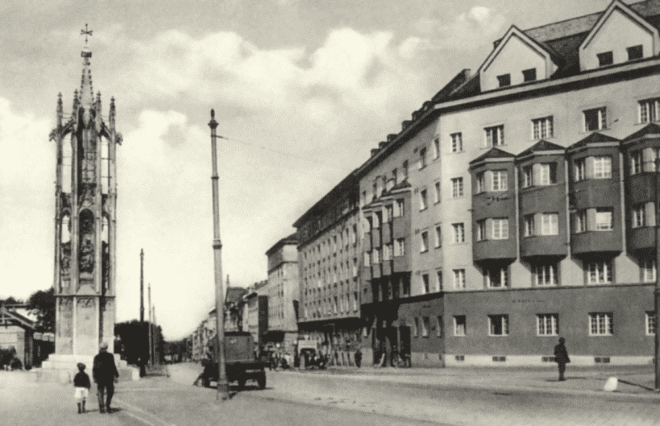
© Brüder Kohn
Spinnerin am Kreuz – Historical Spots in Vienna
Sometime around 1350, a young, freshly married Viennese man was called to war. And every day, his loving wife sat on the street corner with her spinning wheel, awaiting his return. Days turned into weeks turned into months, with everyone telling her he must be dead and that she should give up. But she would not listen, and continued to sit every day at her spinning wheel. Years passed, but the wife still waited for her husband, until one day he came running down the street, straight into her arms. To remember the wife’s love and devotion, this beautiful monument was built on the spot where she waited all those years.

